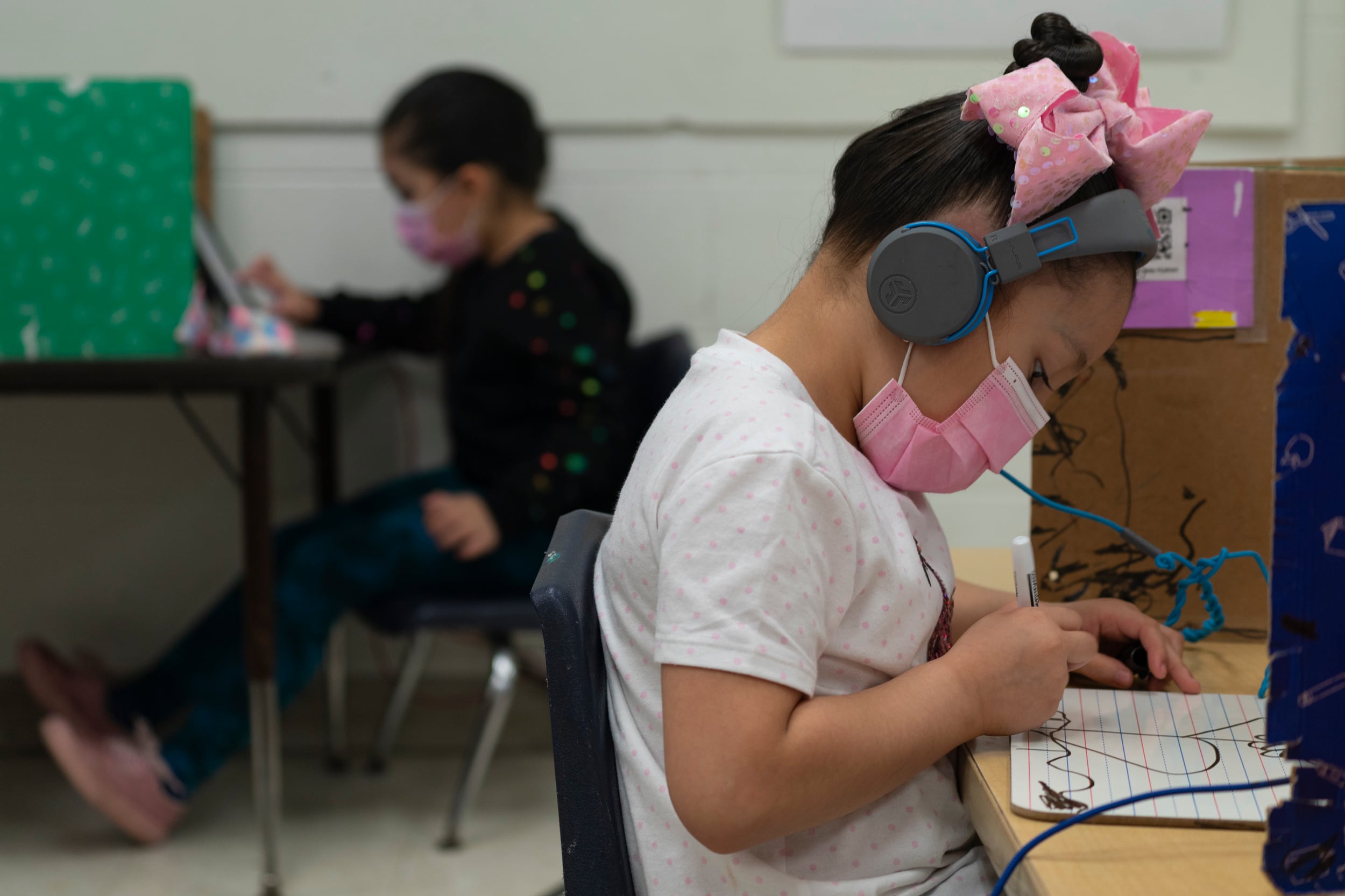Student attendance dipped slightly on the first day of school in Chicago compared to previous years, with 91.2% of students reporting to campuses compared to rates typically above 94%.
Some key student groups showed attendance lags — notably pre-kindergarten students and Black and Latino students — though the second week brought attendance rebounds, according to data presented Wednesday to the Chicago Board of Education.
First day attendance of white and Asian students topped 95%, compared to Latino student attendance of 93.2% and Black student attendance of 85.8%.
By the second week, attendance averaged 93.4% districtwide — a percentage largely consistent among racial groups.
Still, in the second week, more high school students were absent compared to elementary and middle school students.
Stranded students due to a bus driver shortage also contributed some to attendance issues, officials reported.
So did below average attendance of preschool students, whose attendance rates were 88.5% the second week. Attendance rates among high schoolers also remained a full percentage point below those of elementary and middle schoolers, at 92.1%.
Full analysis of the data is limited because the district did not say how many students attended school during the first week or who it counted as an active enrollee versus who it didn’t. A small fraction of families have said they are sitting out the start of the school year because of safety concerns; it’s not clear how many or whether they are counted in the attendance data.
Officials said they will release full enrollment data after the 20th day of school, which is next week. Last fall brought the district’s sharpest enrollment drop in two decades.
Sara Kempner, the executive director of enterprise data strategy for the district, said she was encouraged by the rebounds and that the district was stepping up efforts to reach those who have not yet shown up to school. Chicago Public Schools is starting home visits this week, Kempner said, and it is setting up a network-level support program called “The Nest” to help schools re-engage students who have been found but have not yet enrolled for a variety of reasons.
“Our outreach efforts are having positive effects,” said Kempner, pointing to the closure of gaps in attendance rates by the second week as evidence of progress.
School board members drilled down on the potential impact of a bus driver shortage that has left 3,300 students stranded without bus service.
Interim chief operating officer Lindy McGuire and transportation director Kimberly Jones said that the bus driver shortage continued to present challenges, and the district was prioritizing solutions for students with special needs and those who are homeless or in temporary living situations (the district is in many cases required to provide transportation for these student groups by law).
Chicago is offering qualifying families $1,000 to help fill in transit gaps in the first few weeks, with the first round of payments sent to schools last week, and Jones said she is close to finalizing deals with cab companies and van company vendors to help arrange transportation for about 200 of the highest-need students.
About 3% of the 3,300 students who’ve been stranded by bus driver shortages and route cancellations have not shown up at school, McGuire told the board.
That prompted Miguel del Valle, the school board president, to ask about other options to immediately reconnect with learners if transportation can’t soon be provided. One option he floated was broadening who qualifies for the district’s remote learning program, which is currently limited to students with medical complications.
“I see the possibility down the road that, if we aren’t able to provide transportation, and you have a family that has a diverse learner who has needs that have to be addressed, we may have no other option but to provide remote instruction,” he said. “Do you see that happening?”
“I believe so,” said interim CEO José Torres.
“I hope it does not come to that,” replied del Valle.
Board members pressed for more detail on the missing young learners.
“We know the reasons why the kindergarten and prekindergarten numbers are complicated,” said board member Luisiana Melendez. “We hope to hear a little bit about what is being done with those students, are they attending community organizations close to home? Have they left the district? It is very important to pay attention to those students, because what happens in those earlier years has repercussions in the older grades.”
Officials responded that the district’s early childhood program office is running through names and looking at enrollment of young learners on a case-by-case basis to try to better understand where students went.







